Elements of Design in Fashion
The very first assignment we got this semester at NIFT in Fashion Studies was to make a scrapbook on elements and principles of design in fashion. Basic elements of design in fashion include lines, shapes, form, colour, and texture, whereas the primary principles of design include balance, emphasis, proportions, harmony, variety, and rhythm.
Elements of Design in Fashion
LINES
Lines include straight lines, diagonal lines and curve lines etc. It is a basic element of design and refers to a continuous movement of points in a space. The edges of forms and shapes too create line element.
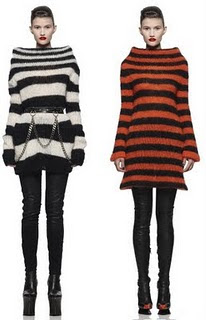
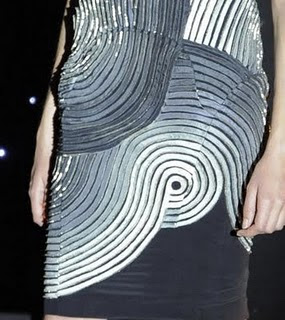
1. Stripes from Alexander McQueen Autumn(Fall)/Winter 2009
2. Rhythmic lines from Manish Arora Spring/Summer 2010
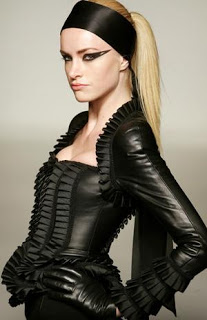
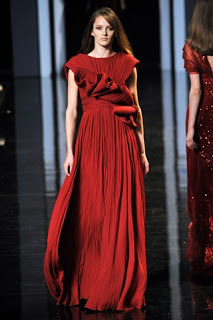
SHAPES
Basic elements of design like point and line form shapes. A shape is a two dimensional area that stands out from the space around it due to variations in contour, colour or material. Shapes can be geometric or organic.
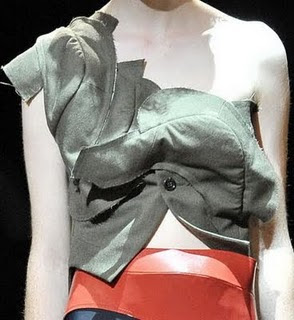

4. Military green top from Comme des Garcons Spring/Summer 2010 with patch work details creating interesting shape and form.
5. Model from Jean Paul Gautier Spring/Summer 2010 couture show.
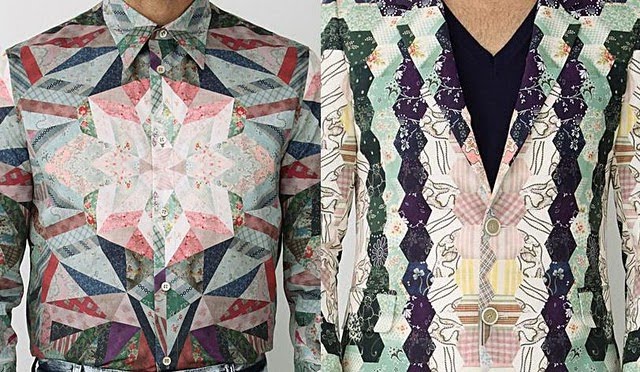
6. Shapes in the form of prints from Alexander McQueen Spring/Summer 2010 menswear collection.
FORM
Form is the 3-D element of design and has length, width and height. Form can be organic or inorganic and is enhanced by colour, shade, tone and texture.
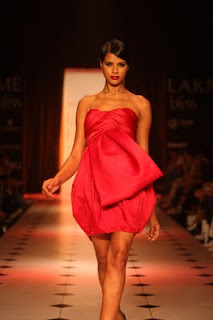
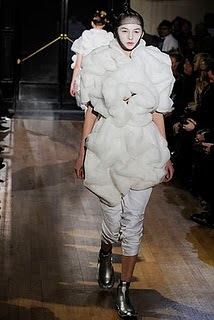
7. Balloon silhouette seen in Gauri and Nainika Spring/Summer 2010 collection, Lakme Fashion Week, India.
8. Rei Kawakubo’s models walked in white pads inspired from the serene winter snow lumps or may be detergent foam?
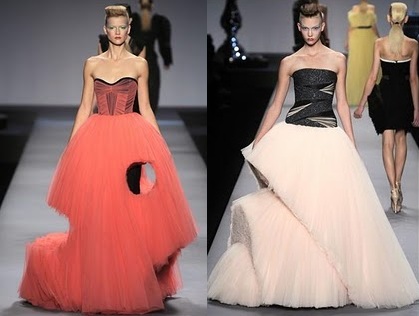
9. Viktor & Rolf Spring/Summer 2010

10. Shoes that need no introduction! Apart from the form, I really love the texture!
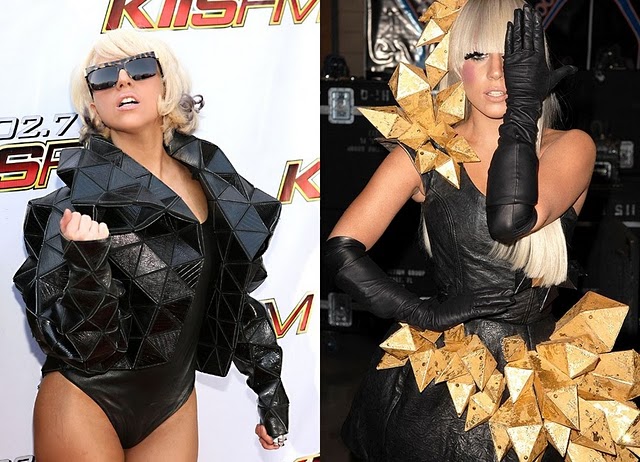
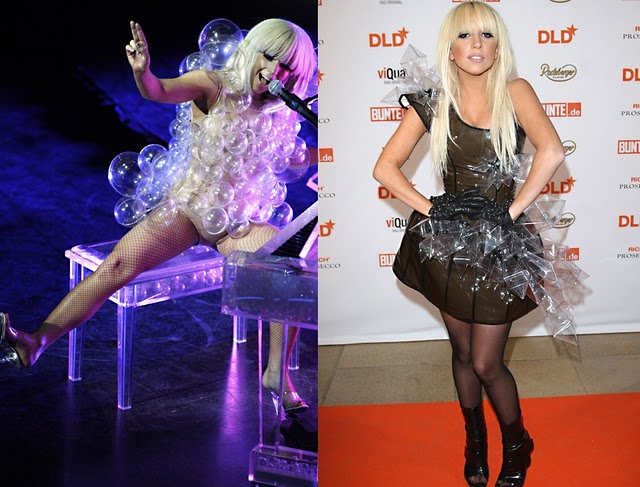
11. Lady Gaga’s geometric lessons!
COLOUR
Yet another basic element of design enhanced by hue, value, tints and shades. Colours decide the mood depending on the combination. Warm colours consists of shades obtained from red, yellow and orange. Cool colours include those obtained from blue, green and purple. Tints and shades of black and white from the neutral colour range.
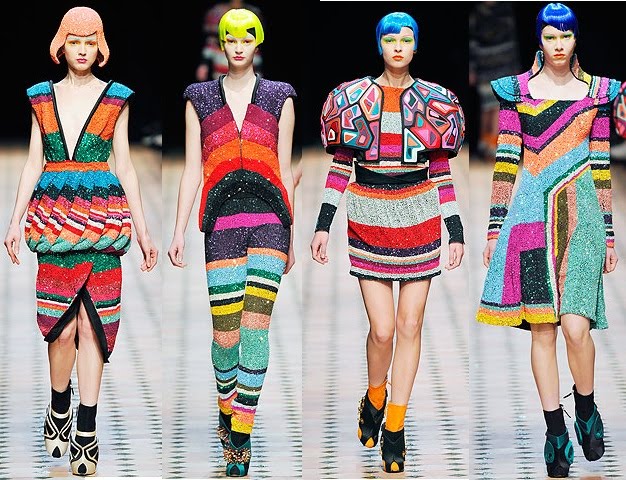
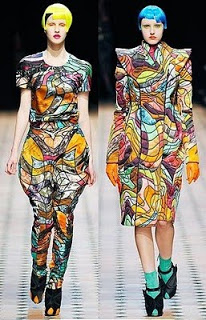
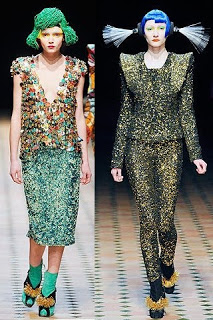
12. I could not think of any other designer apart from Manish Arora himself who judiciously uses bold colours almost in every collection of his.
TEXTURE
Textures in design are both visual and tactile. Textures are widely imparted in fashion in the form of prints, weaves, and other surface embellishments.
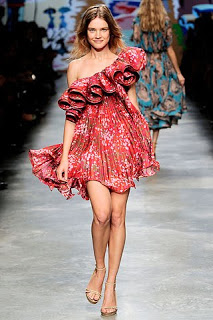
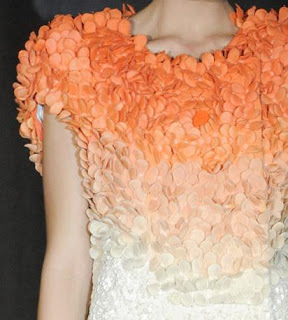
13. Paint spill texture seen in Stella McCartney Spring/Summer 2010.
14. Surface embellishments taken from Manish Arora Spring/Summer 2010.

15. Reptile prints from Alexander McQueen Spring/Summer 2010 collection.
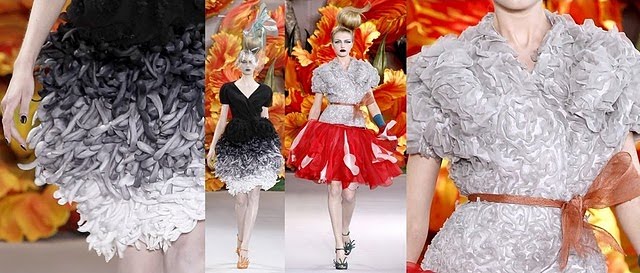
16. Surface treatment, John Galliano for Christian Dior Couture Autumn(fall)/Winter 2010.
Principles of Design
BALANCE
The two types of balance include Symmetric and Asymmetric balance.
SYMMETRIC
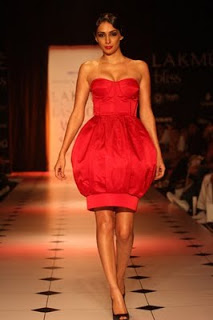
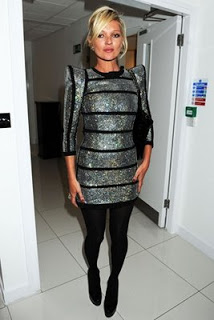
17. Visual from Gauri and Nainika Spring/Summer 2010, Lakme Fashion Week, India.
18. Kate Moss wearing symmetric futurism inspired dress.
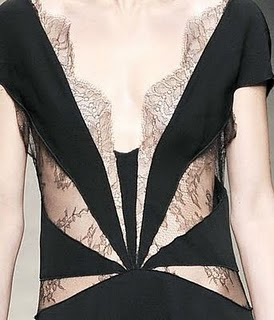
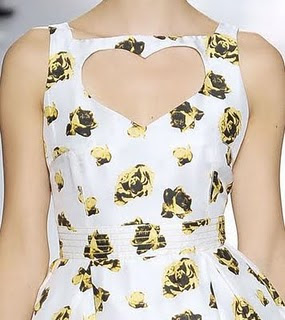
19. Symmetric outfit from Stella McCartney Autumn(fall)/Winter 2009 collection.
20. Heart cut symmetric dress from Luella Bartley’s Spring/Summer 2010 collection.
ASYMMETRIC
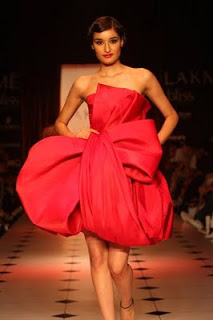
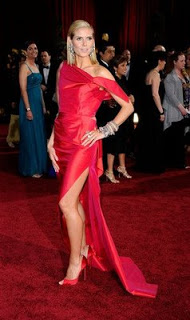
21. Giant bow in bold red from Gauri & Nainika’s Spring/Summer 2010 collection
22. Heidi Klum at Oscars 2009 wearing an asymmetric red gown.
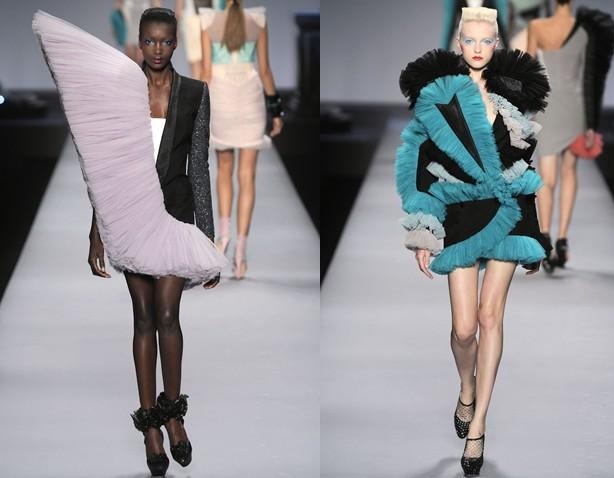
23. Viktor & Rolf Spring/Summer 2010.
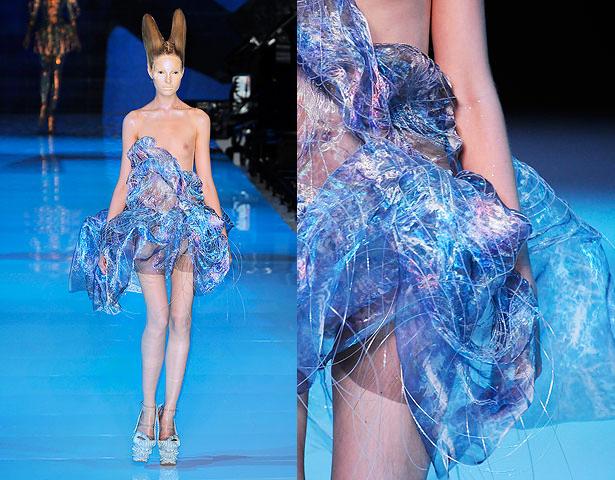
24. Alexander McQueen Spring/Summer 2010.
PROPORTIONS
Proportions in design indicate the relativity of size/quantity of various elements.
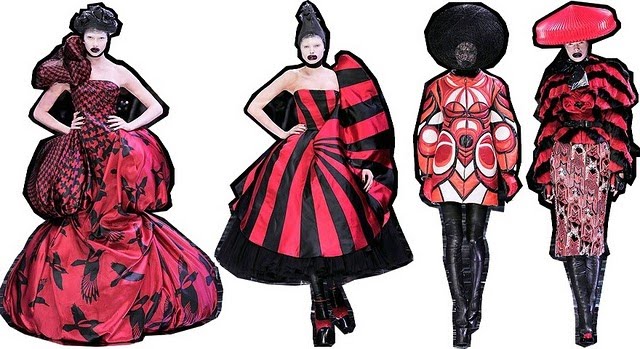
25. Alexander McQueen Autumn/Winter 2009.
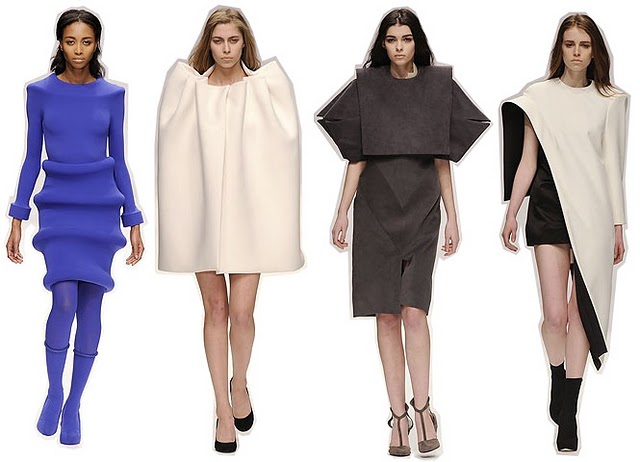
26. Central Saint Martins Autumn/Winter 2010.
HARMONY
Harmony is achieved through variety and unity of various elements like colour, shapes etc.
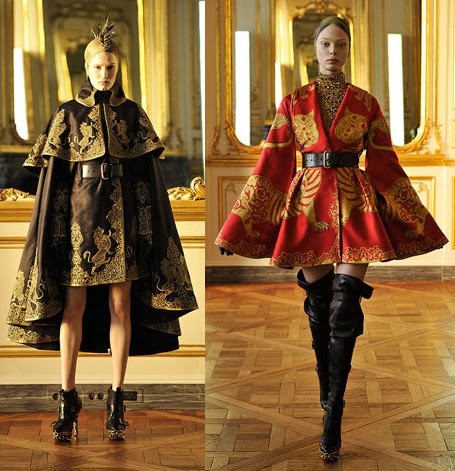
27. Lee McQueen’s last collection inspired from Byzantine period had various elements like embellishments, pleats, proportions and textures neatly balanced throughout.
RHYTHM
Rhythm is achieved with repetition or recurrence of elements of design in fashion such as line, colour, pleat etc. Draped outfits are always rhythmic as the fabric flows over the skin.
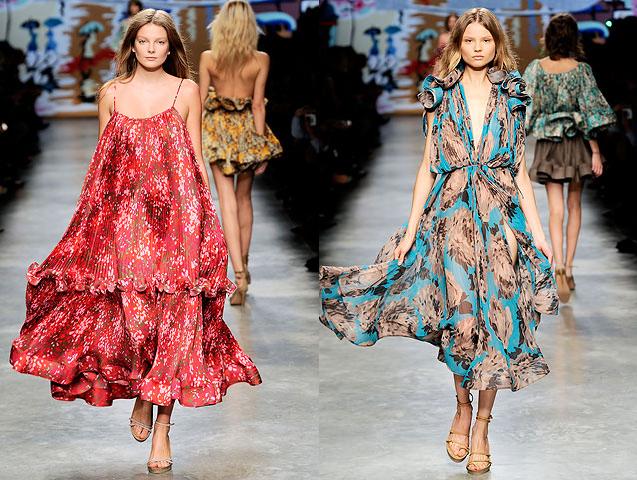
28. Draped garments from Stella McCartney Spring/Summer 2010 colelction.
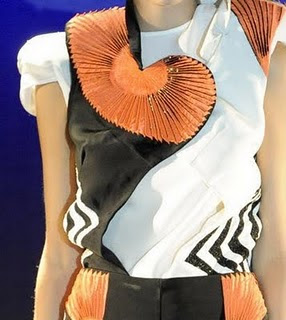
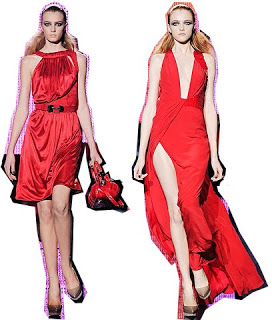
29. Rhythmic repetitive pleats – Manish Arora Spring/Summer 2010.
30. Versace’s draped evening dress.
VARIETY
Variety or alliteration is the usage of different elements of design, often emphasising contrasting elements.
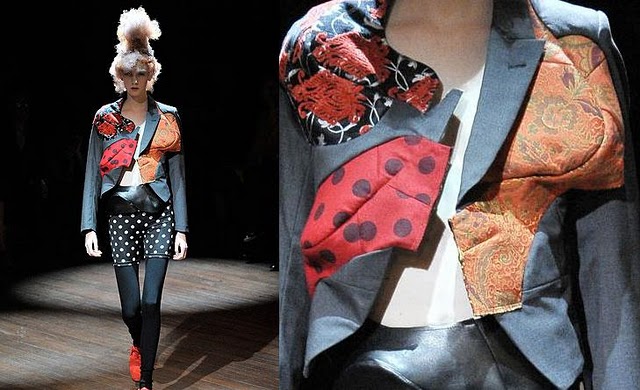
31. Rei Kawakubo’s patch worked jacket is the best example that I could recollect.
Images: Vogue UK, Vogue India, & designer’s own



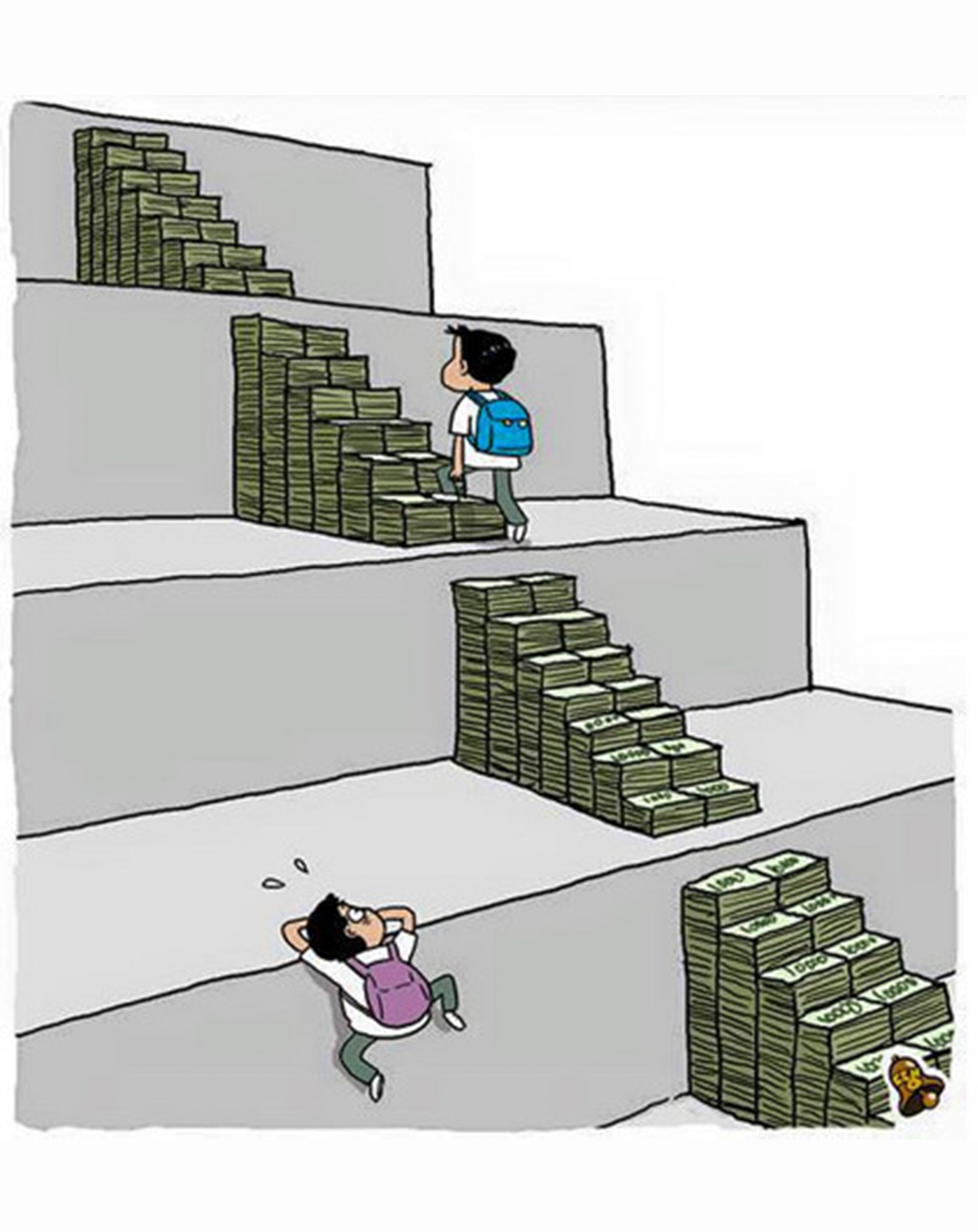
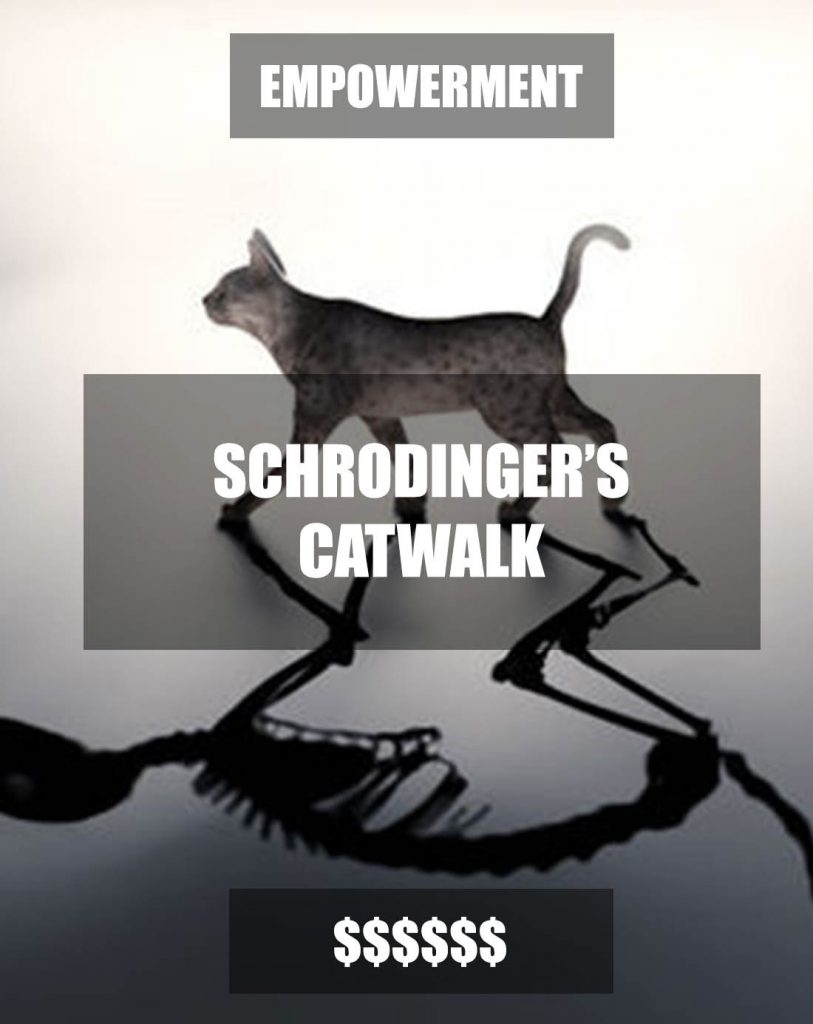
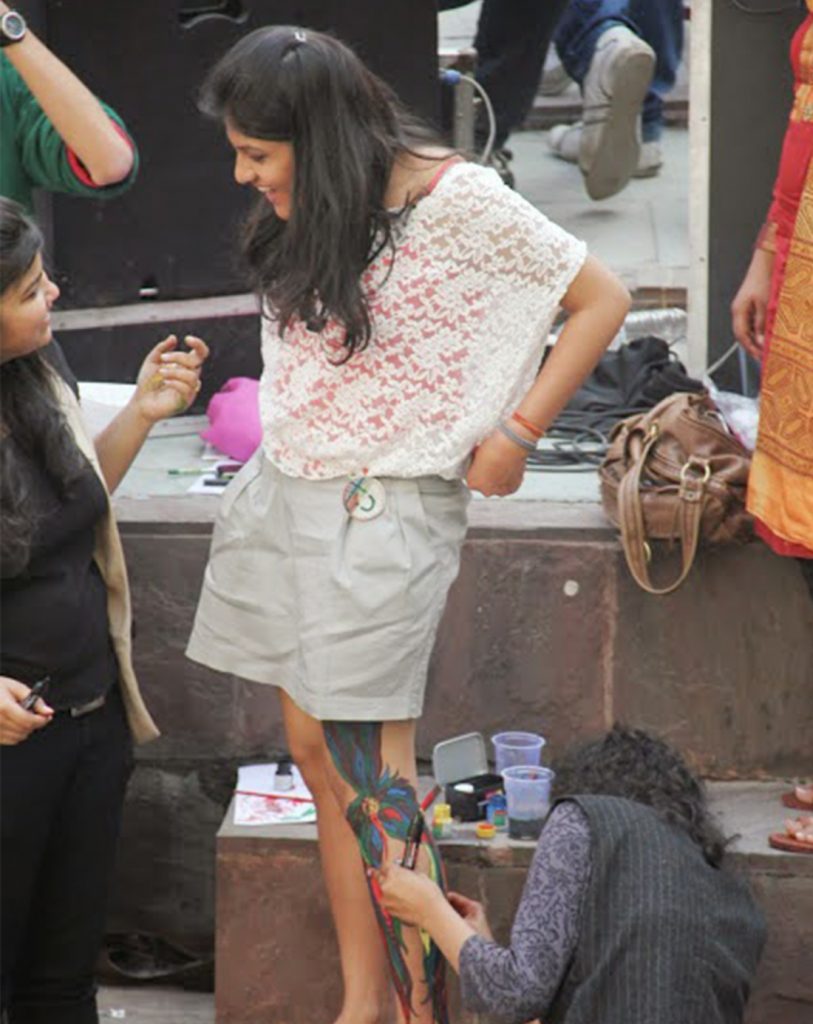
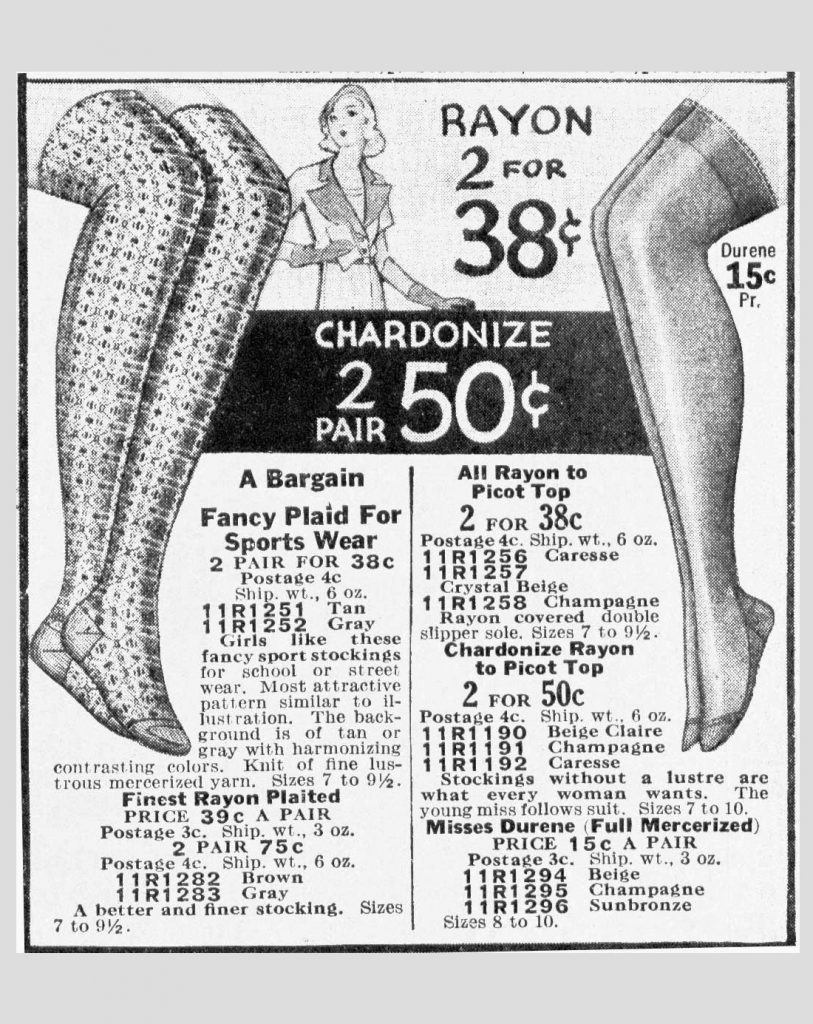
Pingback: Elements of Art and Design for NIFT Entrance Preparation - Purushu Arie
hayakhan
good
vrujal bhalani
Great Elements of fashion design. Wonderful share. Much obliged for It. Simply continue putting your earnest attempts.
anoop
lovely.. need more content and visuals to support
Yolisa Majija
Quite interesting, eye catching and informative